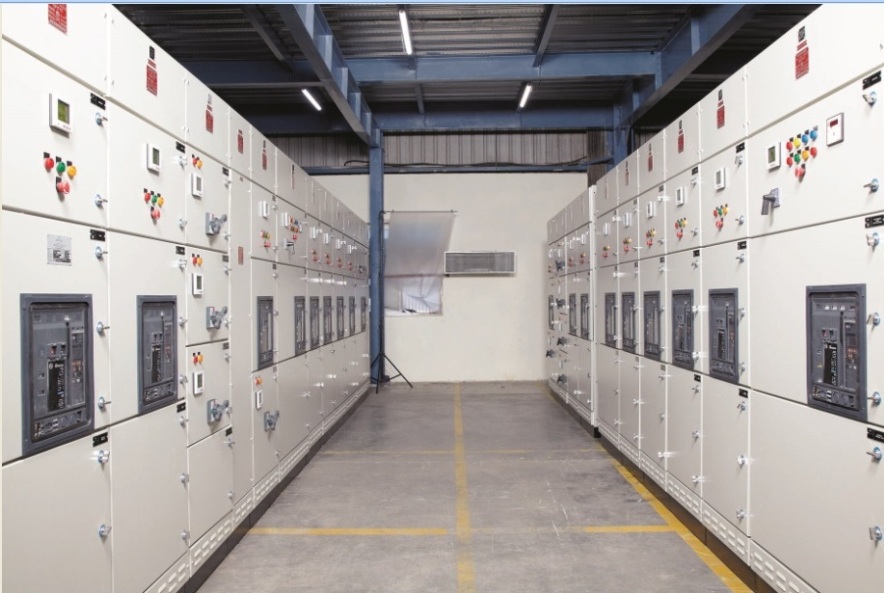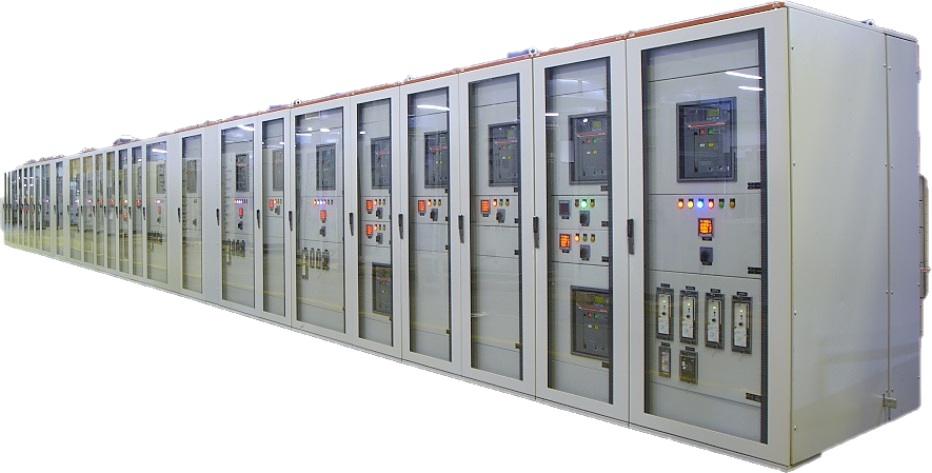The degree of protection of an electrical panel plays an important role: Sterling and Wilson
- August 28, 2021

An electrical panel might appear as an inconspicuous element of a power distribution system. However, its criticality cannot be overstated. In this exchange with T&D India, we have Dibyendu Ray, COO – Transmission and Distribution, Substations and Railways Business, Sterling and Wilson Pvt Ltd, giving keen insights on electrical panels from an EPC contractor’s perspective. Ray discusses the diligence that an EPC contractor needs to exercise to ensure quality performance and safety of electrical panels, which form an integral component of the power distribution system of any installation.
As a leading EPC contractor in the power T&D space, how does Sterling and Wilson rate the importance and criticality of an electrical panel, especially in infrastructure projects?
The criticality and importance of electrical panel are immense in any power distribution and Infrastructure projects as it acts as the final point of controlling and delivering the electric power to the utility systems.
When it comes to procurement of electric panels, what aspects do you look at closely, say for instance durability or safety?
Safety is a critical aspect for any electrical equipment, and for distribution switchgear that is placed in proximity of people. To adhere to the safety norms under different installation conditions, the degree of protection of the electrical panels comes to play an important role. The durability and quality, in any case, needs to be guaranteed by the panel manufacturer. The panels must remain in operation for the entire term life of transmitting and distributing electrical power.
“Safety is a critical aspect for any electrical equipment, and for distribution switchgear that is placed in proximity of people.”
Given that there are numerous panel builders, what parameters do you consider while including them in your potential vendor list?
Some of the most important criteria to select a suitable vendor for electrical panels and switchgear items are: design & engineering competence, factory capacity for timely delivery, type tests conformity, availability of testing facilities, quality and workmanship, and past performances.
Similarly, for switchgear, how is the brand selection done? Do project owners (owner’s engineers) usually specify the switchgear brands that they would like to use in the electric panels?
For the selection of switchgear, the criteria remain the same as for electrical panels. However, the brand of switchgear is generally specified by the project owner or the end-user which are at the heart of the entire power transmission & distribution system.
“In general, panel builders are conforming to safety standards. However, the end-user needs to take care of any special safety requirement depending on the application peripheral to the installation.”
Please orient us with some of the safety standards that are currently applicable to electrical panels. In a general sense, do you feel that panel builders are abiding by them diligently?
 Many different electrical safety standards need to be followed in the workplace to protect the integrity of the building, plant, and people while on the job. That includes preventing electrical shocks, electrical fires, and other electrical hazard related issues. Consensus standards, such as electrical safety standards, are often developed by safety companies, government agencies, or other ANSI-accredited businesses that work to find the best practice methods in particular situations.
Many different electrical safety standards need to be followed in the workplace to protect the integrity of the building, plant, and people while on the job. That includes preventing electrical shocks, electrical fires, and other electrical hazard related issues. Consensus standards, such as electrical safety standards, are often developed by safety companies, government agencies, or other ANSI-accredited businesses that work to find the best practice methods in particular situations.
The best-known name in workplace safety is the Occupational Safety and Health Administration or OSHA. It regulates many different aspects of workplace safety, including basic electrical safety. Some of their important electrical standards are: 29 CFR 1910.137 Electrical Protection Equipment; 29 CFR 1910.269 Electric Power Generation, Transmission & Distribution. The National Fire Protection Association, or NFPA, is another group that provides safety standards focused on electricity. NFPA’s famous set of standards is NFPA 70 and is also known as the ‘National Electrical Code’ or NEC.
In general, panel builders are conforming to safety standards. However, the end-user needs to take care of any special safety requirement depending on the application peripheral to the installation.
Also read: Sterling And Wilson Solar Sees Order Inflow Of Rs.473 Crore In FY22
It is alleged that project owners do not assign adequate importance and budgets to electric panels, deeming them as lesser important project constituents. What is your view?
We do not think so. Any project owner or consultant prepares a budget based on the power distribution scheme of the plant or building and taking rates from the vendor or market and past procurement data. Electrical panels and switchgear, being a crucial part of this scheme, can never be ignored.
“We have executed a power supply contract for Nagpur Metro and are currently working on a similar project for Pune Metro.
Maintaining healthy power factor is now considered mandatory, particularly for industrial projects. Do you see the increasing presence of power factor correction (PFC) solutions in electrical panels?
Maintaining a healthy power factor has increasingly become critical from the point of view of reduced demand charges, increased load carrying capabilities in existing circuits, improved voltage, and reduced power system losses. And, power factor correction solutions involve the use of electric panels for enhancing the capacitance in the circuits.
“As an EPC contractor, we undertake total responsibility to carry out all relevant tests and pre-commissioning checks for the complete system supplied and installed by us.”
We learn that Sterling & Wilson has executed power distribution contracts for several metro rail projects. Tell us more.
Today, Sterling and Wilson is a well-established major player in the metro rail projects and related urban infrastructure space, such as high-speed rail (HSR), semi high-speed rail, rapid transit systems (RRTS) etc. We have executed a power supply contract for Nagpur Metro and are currently working on a similar project for Pune Metro under Maharashtra Metro Rail Corporation. Additionally, we have delivered projects in OHE and 3rd Rail segments for Mumbai Metro Line – 2A and Kanpur Metro.
Does Sterling and Wilson undertake testing of electrical panels sourced from vendors? What kind of tests are electric panels subjected to?
We don’t undertake testing as a business segment separately. However, as an EPC contractor, we undertake total responsibility to carry out all relevant tests and pre-commissioning checks for the complete system supplied and installed by us, including that of electric panels for successful and smooth commissioning of the entire power supply system.
Electric panels undergo all relevant tests such as continuity checks, insulation resistance test, HV test and all other safety-related checks viz. clearances, degree of protection etc, before they are energized. Further, depending on applications, other special tests are also conducted, as required, before the panels are pressed into service.

What does maintenance and servicing of electrical panels typically entail?
There are stipulated procedures for both preventive and routine maintenance of electrical panels so as to avoid any malfunctioning and prevent shocks and fire hazards arising from it.
Sterling and Wilson has executed a large number of power T&D projects, involving extensive use of electrical panels. What project comes to your mind as most challenging or complex, in terms of the role of electrical panels?
Yes, Sterling and Wilson has executed many power T&D projects involving extensive use of both HV and LV electrical panels. One of the iconic projects successfully delivered by us for Durgapur Steel Plant, West Bengal, under Steel Authority of India Ltd (SAIL), was quite complex, as far as use of electrical panels is concerned. For this project, we successfully supplied and commissioned almost 350 switchgear panels starting from 415V, 3.3kV, 11kV up to 33kV, covering six substations, which constituted the backbone of MV power distribution for the augmentation of the entire integrated steel plant.


